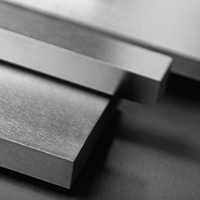What is Food Grade Stainless Steel?
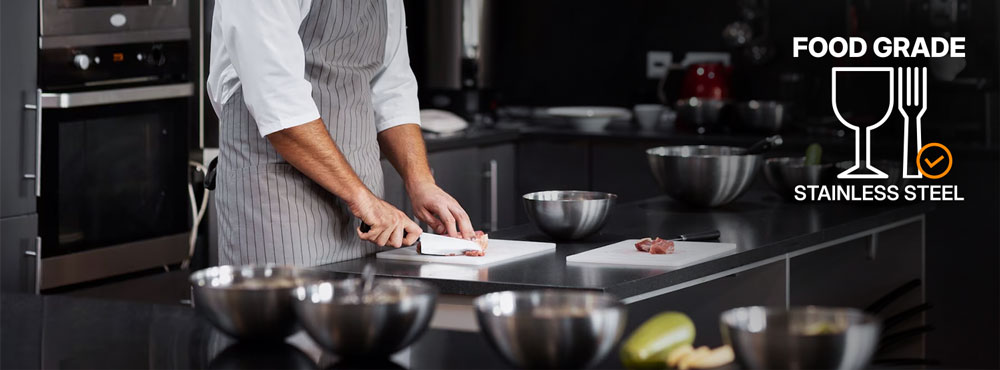
In our kitchens as well as in the food industry, food grade stainless steel is exposed to varying temperatures, fruit acids, oxygene, water, and harsh cleaning chemicals just to name a few things that can influence the durability and challenge the corrosion resistance of any steel.
Food grade stainless steel has to meet very strict standards to ensure that neither taste nor smell or color of the food it comes in contact with is being changed. It has to be toxic-free and is not allowed to give off particles into the food it comes in contact with.
COMMON TYPES OF FOOD GRADE STAINLESS STEEL:
The most commonly used stainless steel grades used in kitchens and the food industry are the 304, 316 and 430.
More like a surgical steel, with a smoother surface, it is used for example for cutlery.
Often used for appliance trims or cooking utensils. |
COMMON TYPES OF FOOD GRADE STAINLESS STEEL:
The most commonly used stainless steel grades used in kitchens and the food industry are the 304, 316 and 430.
More like a surgical steel, with a smoother surface, it is used for example for cutlery.
Often used for appliance trims or cooking utensils. |
Average mass fraction of 18% chromium - 10% nickel.
For the use in chemical and maritime environments.
Average mass fraction of 8% chromium - 8% nickel.
Due to its high polishability it is used for kitchenware and decorations.
Average mass fraction of 18% chromium - 0% nickel.
For people with a contact allergy to nickel this is the ideal steel.
WHICH STAINLESS STEELS ARE FOOD GRADE?
Food grade stainless steels are often austenitic 18/10, 18/8 or 18/0 steels.
What does that mean?
WHICH STAINLESS STEELS ARE FOOD GRADE?
Food grade stainless steels are often austenitic 18/10, 18/8 or 18/0 steels.
What does that mean?
Average mass fraction of 8% chromium - 8% nickel.
Due to its high polishability it is used for kitchenware and decorations.
Average mass fraction of 18% chromium - 10% nickel.
For the use in chemical and maritime environments.
Average mass fraction of 18% chromium - 0% nickel.
For people with a contact allergy to nickel this is the ideal steel.
304 STAINLESS STEEL FOOD GRADE
AISI 304 is for example a 18/8 steel with 18% of chrome and 8% of nickel, which provides excellent corrosion resistance and ease of fabrication.
304 steel and AISI 316 are reliable and safe material for food contact, with negligible leaching under typical use conditions. It is considered safe for food contact by various regulatory bodies and is extensively used in the food industry.
The austenitic 304and the 18/8 stainless steel are chemically the same. Both have a mass fraction of 18 % chromium and 8 % of nickel.
The 304 has 2 further variants, the 304L which has a lower amount of carbon with 0.03 % and can handle higher temperatures as well as the 304H with a higher carbon content of 0.04 - 0.1% that can handle even higher temperature ranges.
The importance of choosing a grade of stainless steel is as always its intended use, for a food grade steel the basic 304 would be the right choice. Though the 303 also belongs to the 18/8 family, is, due to the added sulfur, not included in the food grade range.
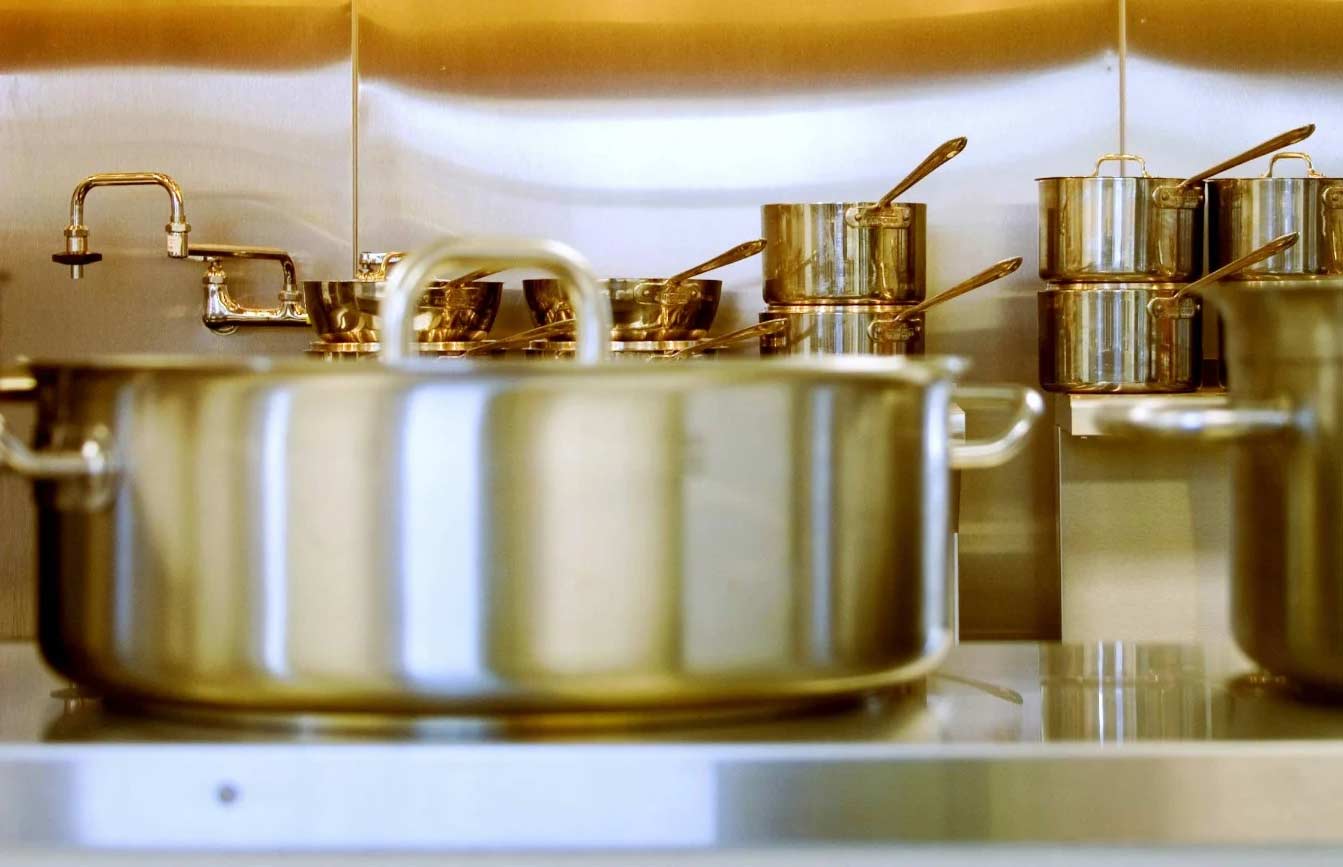
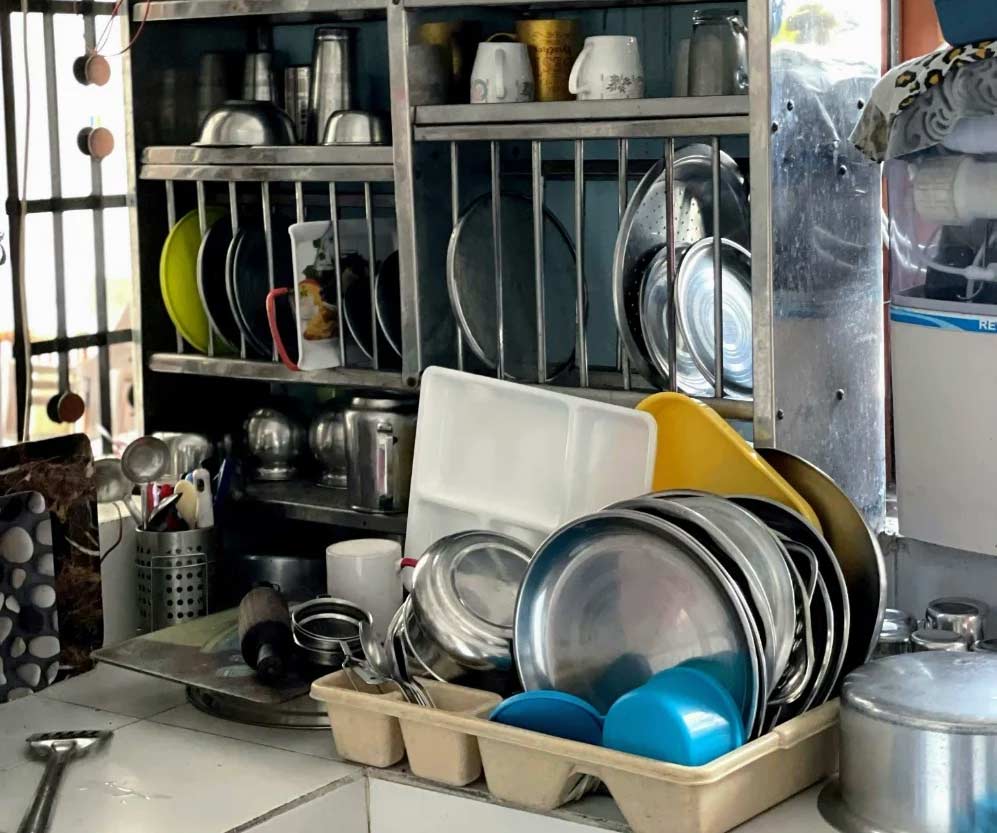
316 Stainless Steel Food Grade
The 316 steel is an austenitic chromium-nickel-molybdenum steel. It has a mass fraction of 16 % chromium, 10 % nickel and 2 % molybdenum. The added molybdenum gives this steel grade a higher resistanceto non-oxidizing acids like nitric-, sulfuric and formic acids.
The 316 can be used in low as well as in high temperatures. Its working temperatures are higher compared to the temperatures required in any kitchen or food processing process. The normal working temperature for this stainless steel is between 68 - 1022 °F (20 - 550°C).
The food grade 316 is very often used for food as it has a high resistance to chlorides, alkalis and acids as they do not experience pitting in comparison to for example the 304.
430 Stainless Steel Food Grade:
The steel grade 430 is a ferritic stainless steel, resistant to stress corrosion cracking and a resistance to organic and nitric acids. It is less resistant to corrosion in comparison to the 304 or 316 and will be used for applications where a high corrosion resistance is not critical.
430 is often used for dishwashers, cookers, washing machines, appliance trims and cooking utensils for example.
The 430F, though similar to the 430, has a higher mass fraction of sulfur which enhances its machinability. Due to the sulfur content, 0.15 - 0.35 %, in the 430F, the corrosion resistance as well as the toughness is lower than in other steel grades and it is unsuitable for cold forming or joint welding and is not classified as a food grade.
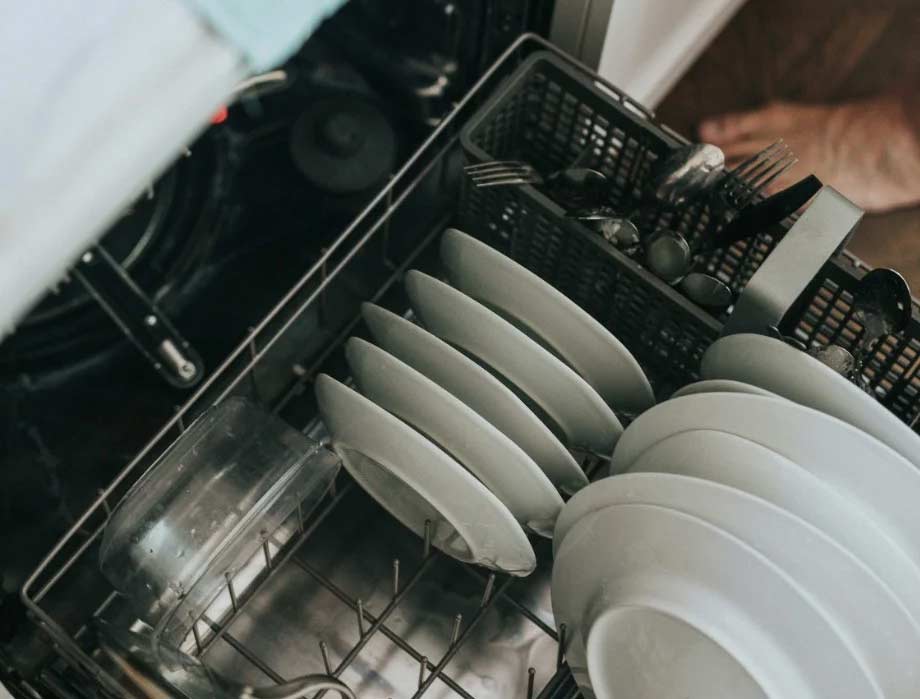
Stainless steel 316 vs. 304 food grade
304 | 316 |
17.5 to 19.5 % Chromium and 8 to 10.5 % nickel | 16.5 to 18.5 % Chromium, 10 to 13 % nickel and 2 to 2.5 % molybdenum |
Austenitic steel | Austenitic steel |
very good corrosion resistance, e.g. oxidizing acids | very good corrosion resistance, e.g. chlorides |
Application include: food preparation tables, cookware, silverware, medical trays and surgical tools | Applications include: water heaters, boilers, industrial kitchens, marine wind turbines, boat fittings |
not magnetizable | not magnetizable |
very good forming properties | good forming properties |
WHY IS STAINLESS STEEL USED IN THE FOOD INDUSTRY?
Stainless steel is a very important material in the food industry and is used there for several important reasons:
Food-grade stainless steel is extremely resistant to corrosion, rust, heat, stains, and aggressive cleaning agents.
Due to these properties, it can be used permanently in moist or wet environments where it is exposed to water or steam without any concerns.
Food-grade stainless steel must be easy to clean to prevent bacteria or germs from remaining on the surface. Additionally, stainless steel contains at least 10.5% chromium, which forms a protective layer on the material's surface.
The smooth and non-porous surface prevents harmful corrosion and the penetration of contaminants into the steel, as well as the growth of bacteria and other microorganisms when properly cleaned.
This ensures that the next foods or beverages that come into contact with the steel do not become contaminated. These properties are crucial for maintaining high hygiene standards in food processing.
Food-grade stainless steel must not alter the taste, smell, or color of food or beverages. Additionally, it must not release any chemicals or components into the food. This is crucial for maintaining the quality of the processed foods.
Food-grade stainless steel is a robust and durable material that is resistant to mechanical stress and wear.
It withstands continuous use at varying and changing temperatures, as well as the rough handling found in kitchens and the food processing industry.
Stainless steel can endure both high and low temperatures. This makes it the ideal material for various processes in food processing, from freezing to cooking and pasteurizing.
Its high durability makes it the ideal material for situations where acidic/alkaline foods and chlorides are produced or used.
The smooth and shiny surface gives fittings, appliances, and components a clean and elegant appearance. Combined with the hygienic properties of food-grade stainless steel, this makes it the preferred material in the food industry.
Thanks to its protective layer, this appearance is maintained for a long time with proper handling and cleaning.
Food-grade stainless steel is extremely resistant to corrosion, rust, heat, stains, and aggressive cleaning agents.
Due to these properties, it can be used permanently in moist or wet environments where it is exposed to water or steam without any concerns.
Food-grade stainless steel must be easy to clean to prevent bacteria or germs from remaining on the surface. Additionally, stainless steel contains at least 10.5% chromium, which forms a protective layer on the material's surface.
The smooth and non-porous surface prevents harmful corrosion and the penetration of contaminants into the steel, as well as the growth of bacteria and other microorganisms when properly cleaned.
This ensures that the next foods or beverages that come into contact with the steel do not become contaminated. These properties are crucial for maintaining high hygiene standards in food processing.
Food-grade stainless steel must not alter the taste, smell, or color of food or beverages. Additionally, it must not release any chemicals or components into the food. This is crucial for maintaining the quality of the processed foods.
Food-grade stainless steel is a robust and durable material that is resistant to mechanical stress and wear.
It withstands continuous use at varying and changing temperatures, as well as the rough handling found in kitchens and the food processing industry.
Stainless steel can endure both high and low temperatures. This makes it the ideal material for various processes in food processing, from freezing to cooking and pasteurizing.
Its high durability makes it the ideal material for situations where acidic/alkaline foods and chlorides are produced or used.
The smooth and shiny surface gives fittings, appliances, and components a clean and elegant appearance. Combined with the hygienic properties of food-grade stainless steel, this makes it the preferred material in the food industry.
Thanks to its protective layer, this appearance is maintained for a long time with proper handling and cleaning.
FOOD SAFETY STANDARDS AND CERTIFICATIONS
How can you tell if steel is food grade? To ensure the stainless steel is food safe, it must meet various standards and certifications, such as:
Does Food Grade mean Food Safe?
Food grade stainless steel is steel that is safe to come in direct contact with foods, so food grade refers to the material. While food safe materials are food grade, food safety takes temperatures and processes into account within the food grade product.
As long as food grade stainless steel is used for its intended purpose it is food safe. If used for other uses but the intended ones it may though not be food safe any longer.
Example: Where one product might be able to hold a cold acidic fluid and is deemed food safe, the same container might not be food safe when holding the same fluid when heated

WHAT YOU NEED TO KNOW ABOUT FOOD-GRADE STAINLESS STEEL!
Food grades are particularly resistant to corrosion and easy to clean. To enjoy this steel for a long time, you should know a few things about it. The protective oxide layer shields this type of steel and prevents the formation of rust. Perfect for hygienic handling of food.
Yes, unsuitable surface treatments can significantly affect the suitability of stainless steel as food-grade material.
They can lead to microscopic surface damage and contribute to the formation of corrosion spots and bacterial growth. This can make the stainless steel unsafe for contact with food.
In contrast, processes like electropolishing, mechanical polishing, or passivation can improve corrosion resistance. Electropolishing is usually the preferred surface treatment, as the process removes the surface layer. As a result, a microscopically smooth surface is achieved, which does not provide a breeding ground for bacteria.
No, we strongly advise against cleaning food-grade stainless steel with a simple wire brush. Cleaning with wire brushes or scrapers should be avoided as they can damage the surface, leading to pitting or staining.
There is also the risk that the wire bristles may leave behind tiny particles of carbon steel, which can then lead to corrosion. Instead, stainless steel brushes or specialized cleaning agents that do not leave foreign particles and do not damage the surface should be used.
Note: Do not use the same tools for cleaning food-grade steel and regular steel.
No, there are different alloys that have various properties regarding corrosion resistance, mechanical strength, and resistance to chemicals.
The choice of steel alloy depends on your specific requirements and application. The common types of food-grade stainless steel alloys are the best examples to explain this.
Example: Salt & steel
Salt corrodes metal compounds. | |
Food Grade 304 | Food Grade 316 |
• Resistant to most corrosive substances • Susceptible to prolonged exposure to salt Not suitable for processes like • repeated, prolonged exposure to salt or saltwater | • Resistant to most corrosive substances • significantly more resistant to salt exposure Suitable for processes • that use salt or saltwater |
Can welding alter the properties of food grade steel alloys?
Yes, welding can negatively alter the properties of food-grade stainless steel and remove the protective oxide layer. This can lead to faster corrosion.
Therefore, it is essential to use appropriate welding procedures.
The heat input during welding can cause sensitization. This leads to the formation of chromium carbides at the grain boundaries, which can reduce corrosion resistance. This can be avoided through special welding techniques and post-treatment processes such as passivation.
Note: Lower carbon variants, such as ABRAMS® 316L food grade steel, are less susceptible to sensitization due to welding.
SS FOOD GRADE APPLICATIONS:
Machinery tools for processing food items, such as mixers, grinders, and slicers. Also for brewery vessels, wine storage, jam making or milk tanks.
Food grade stainless steel is used in the manufacture of knives, forks, spoons, and other kitchen utensils.
Food grade stainless steel is used for countertops and tables in commercial kitchens and food processing plants.
Food grade steel is used for kitchen appliances like ice makers, sinks, stoves and refrigerators.
Machinery tools for processing food items, such as mixers, grinders, and slicers. Also for brewery vessels, wine storage, jam making or milk tanks.
Food grade stainless steel is used in the manufacture of knives, forks, spoons, and other kitchen utensils.
Food grade stainless steel is used for countertops and tables in commercial kitchens and food processing plants.
Food grade steel is used for kitchen appliances like ice makers, sinks, stoves and refrigerators.
SUMMARY
Food-grade stainless steel must not contaminate or cross-contaminate any food it comes into contact with
It must not corrode, rust, or crack exposed to:
• Changing temperatures
• Contact with acids
• Contact with water
• Contact with chemicals
• Release any components into the food
• Discolor the food
• Be hazardous to health
• Change the taste of the food or beverage
ABRAMS Industries® Food Grades
We pride ourselves in supplying you with precision in tool steel, high speed steel, stainless steel, heat-treatable steel and case hardening steel in 44 steel grades with 83,928 dimensions.
As a food grade steel supplier we saw, mill and grind for you in our Warehouse in Illinois.


